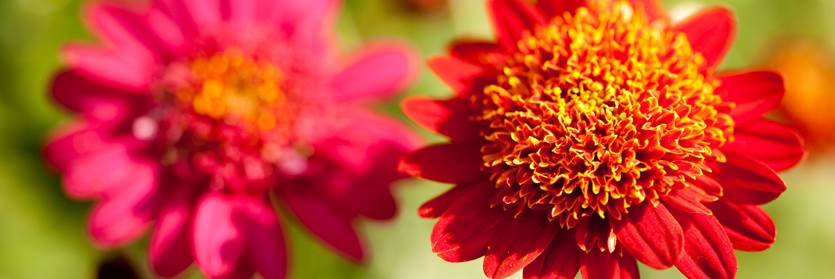Inside The New York Botanical Garden
Plant Talk
Posted in Exhibitions, Learning Experiences, The Edible Garden on July 16 2010, by Plant Talk
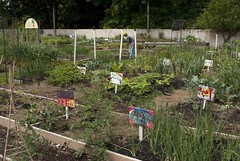 From digging in the Children’s Vegetable Garden to pretending to harvest fruits and vegetables at the Farm-to-Table play station, it’s easy for families to make a connection with food while having fun during The Edible Garden, which runs through October 17. From digging in the Children’s Vegetable Garden to pretending to harvest fruits and vegetables at the Farm-to-Table play station, it’s easy for families to make a connection with food while having fun during The Edible Garden, which runs through October 17.
Explore nature in the Everett Children’s Adventure Garden
- Farm-to-Table play station inside the Bendheim Global Greenhouse
Tuesdays–Sundays, 10 a.m.–6 p.m.
Kids can pretend to “harvest” fruits and vegetables and then use them to “cook” delicious recipes at the “cafe.”
- Flowers-to-Fruits
Tuesdays–Fridays, 1:30–5:30 p.m.;
Saturdays–Sundays, 10 a.m.–6 p.m.
Children color paper pollinator puppets and go on a flower hunt, create a field notebook, and pot up a seedling to take home while they learn how flowers become fruits.
Gardening fun in the Ruth Rea Howell Family Garden
- Children’s Vegetable Garden
Tuesdays–Sundays, 12–6 p.m.
Children connect with the food they eat by exploring whimsical gardens and plantings, including the Pizza Garden and Breakfast Bowl. Kids can hunt for squash-family plants such as cucumbers and gourds and see the new Pumpkin Patch!
- Dig, Plant, Grow!
Tuesdays–Sundays, 1:30–5:30 p.m.
Kids are encouraged to dig, weed, compost, plant, tend, and harvest in garden plots, with a different theme each month. Herbal Delights, Naturally is featured through July 30. Families go on an herb hike through the garden, cool down with an iced herbal tea, sample a healthful herbal snack, and pot up an herb to take home.
All proceeds of The Edible Garden benefit the Children’s Gardening program.
Get Your Tickets |
Posted in Exhibitions, The Edible Garden on July 15 2010, by Plant Talk
Chef Inspired by Greenmarket; Gives More Cooking Demos this Weekend
 |
Trish Sebben-Krupka is Corporate Chef for the Viking Culinary Center and Carl Schaedel and Co., and owner of Local Girl Makes Food, a culinary education and personal chef business. Her recipes appear in The Best of Vegan Cooking. She will present cooking demonstrations at The Edible Garden’s Conservatory Kitchen July 17 and August 14 at 1 and 3 p.m. Viking is a Supporting Sponsor of The Edible Garden. |
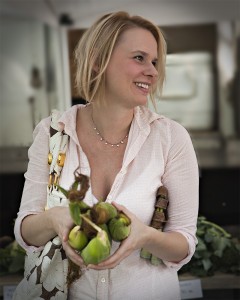
I pulled into the Garden’s Mosholu gate last Wednesday, excited to return to the Greenmarket. With five basic pantry ingredients and $25, I planned to see how far we could stretch this budget into delicious, family-friendly meals. My pantry included salt, pepper, olive oil, red wine vinegar, and hot sauce, things that are ordinarily found in just about any home kitchen.
I wandered through the Greenmarket, accompanied by Adriana Pecunia, my friend and fellow chef. Our $25 was spent quickly, and we walked away with a bag brimming with fresh corn, tiny new potatoes, red onions, flat romano green beans, tomatoes, parsley, cilantro, purslane, gold ball squash, zucchini, basil, carrots, and a petite baguette. I also managed to talk one of the farmers into making a deal on two quarts of tart red cherries.
We then made our way to the Conservatory Kitchen, where people were seated awaiting our Cooking for Your Health demonstration despite the incredible midday heat. I was excited to see that the high school-aged participants in the Botanical Garden’s GardenWorks program had joined us, as I love to show young people new foods and cooking techniques. This program, in partnership with the Bronx Institute’s Gear Up program, introduces students to new experiences and career choices in botanical science, horticulture, and education.
Adriana and I got cooking right away, making a light and healthful vegetable soup with onions, carrots, potatoes, green beans, zucchini, and corn, along with some fresh herbs and my favorite ingredient of the day: tart, lemony, purslane.
Read More
Posted in Exhibitions, The Edible Garden on July 14 2010, by Plant Talk
| Written by Burpee Home Gardens Team. Burpee is a Supporting Sponsor of The Edible Garden. |
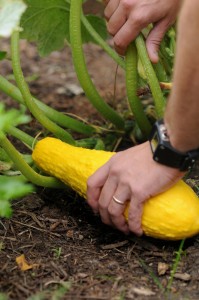 The interesting thing about home vegetable gardens (and one that experienced gardeners learn to perfect), is that they evolve with the seasons. From cool to warm to hot, and back again, each of these cycles provides an opportunity to plant different crops for a maximized garden harvest.
The interesting thing about home vegetable gardens (and one that experienced gardeners learn to perfect), is that they evolve with the seasons. From cool to warm to hot, and back again, each of these cycles provides an opportunity to plant different crops for a maximized garden harvest.
One of the best-loved varieties that supply multi-seasonal recipes at your table is the trusty squash. We love the fact that you can grow a squash for almost every holiday recipe, from the Fourth of July cookout to Christmas dinner. Whether in the salad bowl or on the grill, in soup or in bread, squash can do it all. You can even eat squash blossoms—cooked or raw! Blossoms are a special treat reserved for only the best restaurants (and home gardeners) because of their perishable and delicate nature. But best of all, squash is one of the easiest and most prolific vegetables you can plant in your garden, and with success.
Native to the Americas, squash can be divided into two types: summer and winter. Summer squashes ripen quickly (as fast as 50 days). Winter squashes and their hard rinds ripen later. Summer squashes such as yellow, crookneck, and zucchini are eaten soon after harvesting—skin and all. They’re great eaten raw (with vegetable trays), steamed, grilled, or boiled. You can stuff them and bake them or grate larger-sized ones for delicious and flavorful breads. Winter squashes such as acorn and butternut, are often cut in half and baked, or boiled and then mashed like potatoes.
Read More
Posted in Exhibitions, The Edible Garden on July 8 2010, by Plant Talk
 |
Cathy Erway, author of The Art of Eating In, will present cooking demonstrations at The Edible Garden Conservatory Kitchen on Saturday, July 10, at 1 and 3 p.m.. |
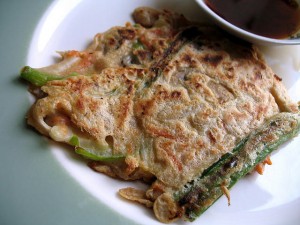 Perhaps you’ve tried them at Korean restaurants, with spicy kimchee in the batter. Maybe you’ve heard of them and guessed they were more or less like scallion pancakes at Chinese restaurants, but with more stuff. Maybe you’ve even taken a crack at making them at home, with strips of leftover meat or seafood. In any case, you are probably well aware of how simple yet delicious a crisp, savory pancake hot off the pan can be. I’ve found that holds true with almost any ingredient you mix into the batter.
Perhaps you’ve tried them at Korean restaurants, with spicy kimchee in the batter. Maybe you’ve heard of them and guessed they were more or less like scallion pancakes at Chinese restaurants, but with more stuff. Maybe you’ve even taken a crack at making them at home, with strips of leftover meat or seafood. In any case, you are probably well aware of how simple yet delicious a crisp, savory pancake hot off the pan can be. I’ve found that holds true with almost any ingredient you mix into the batter.
My favorite way to enjoy savory pancakes, though, is just with fresh veggies. Red onions and apples is a wildly satisfying combo in the winter. Shredded carrots and parsnips go great together, too. But in the summer, the vibrant flavors of everything that’s in season can’t be beat. Try making the pancakes with thinly sliced peppers of all shades and mixing fresh corn into the batter along with scallions and another type of onion. For the recipe below, I use a filling of mostly shredded zucchini.
Read More
Posted in Emily Dickinson, Exhibitions on July 7 2010, by Plant Talk
 |
Jane Dorfman is Reference Librarian/Exhibitions Coordinator in the LuEsther T. Mertz Library. |
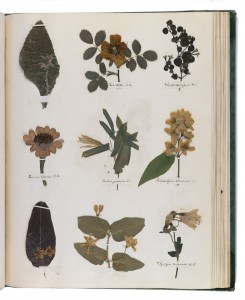 How did Emily Dickinson prepare her herbarium? That is the topic addressed in the current window display of the LuEsther T. Mertz Library’s Rare Book and Folio Room.
How did Emily Dickinson prepare her herbarium? That is the topic addressed in the current window display of the LuEsther T. Mertz Library’s Rare Book and Folio Room.
At 14 years of age, Dickinson, inspired by her readings and botanical studies at Amherst Academy, gathered, dried, pressed, mounted, and identified over 400 plants for her herbarium. She was enthusiastic about the project. She asked her friend Abiah Root in a letter if she had made a herbarium yet and encouraged her to pursue such a project. Dickinson even enclosed a geranium leaf for her friend to press.
In the Library’s William D. Rondina and Giovanni Foroni LoFaro Gallery exhibition of Dickinson’s life, which runs through August 1, a digitized version of the poet’s herbarium is on display. Made available through Turn the Pages Technology, visitors can view Dickinson’s original herbarium virtually by “turning” the pages on a touchscreen. A printed version of Dickinson’s herbarium is included in the Rare Book and Folio Room display.
This small exhibit shows how 19th-century botany enthusiasts created herbaria. The collecting tin (known as a vasculum) belonging to the celebrated botanist John Torrey is on display as well as a botany text by noted instructor Mrs. Almira Lincoln Phelps, a text that Dickinson used in her studies.
Also on view are the materials used in creating a herbarium today, including glue, twine, mounting paper, blotting paper, and a herbarium press. In addition, dried specimens of Monotropa uniflora (Indian pipe) and Heliotropium arborescens L. (heliotrope), two of Dickinson’s favorite plants, are presented, courtesy of the Garden’s William and Lynda Steere Herbarium..
The Rare Book and Folio Room display can be viewed during Library hours through Labor Day.
Posted in Exhibitions, Programs and Events, The Edible Garden on July 2 2010, by Plant Talk
Children Learn How Pollinators Turn Flowers to Fruits
 |
Noelle V. Dor is Museum Education Intern in the Everett Children’s Adventure Garden. |
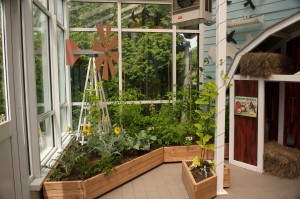 As the school year winds to a close and summer settles in, The New York Botanical Garden invites us to delight our senses and our bellies with The Edible Garden: Growing and Preparing Good Food. Visitors are exposed to a wide variety of edible roots, shoots, and fruits and also experience the many ways our favorite foods go from plant to plate.
As the school year winds to a close and summer settles in, The New York Botanical Garden invites us to delight our senses and our bellies with The Edible Garden: Growing and Preparing Good Food. Visitors are exposed to a wide variety of edible roots, shoots, and fruits and also experience the many ways our favorite foods go from plant to plate.
In its Flowers-to-Fruits program, the Everett Children’s Adventure Garden highlights one essential part of this transformative process: pollination. Here families explore the diversity of flower colors, shapes, and scents as well as the mutually beneficial relationships between flowers and the animals they attract.
The word pollination probably conjures up in most people the classic image of a bee buzzing from flower to flower. While this visual is definitely appropriate, many other animals—butterflies, moths, hummingbirds, bats, ants—act as important pollinators as well. They gain nourishment from the sweet nectar of flowers and, in turn, the flowers are able to change into fruits. Seeing pollination in action throughout the Garden makes me wonder how many of the fruits we eat result from this intricate plant–animal exchange.
Read More
Posted in Exhibitions, The Edible Garden on July 1 2010, by Plant Talk
Oceana Pastry Chef Jansen Chan Shares Preview of 2 New Creations
 |
Jansen Chan is Executive Pastry Chef of Oceana in New York. He will give cooking demonstrations at The Edible Garden on Sunday, July 4. |
Summer is the toughest time for any pastry chef. The abundance of great seasonal produce to put on the menu is too overwhelming. Whether it’s cherries, peaches, strawberries, blueberries or melons, I love them all. When creating a new dish, I want to remain true to the fruit and allow its complexity to shine through—usually the produce is the star with delicious, supporting players to give contrast in texture and flavors.
For The Edible Garden this year, I have the honor of celebrating raspberries. I’ve created two dishes for the event, designed for the everyday home chef. I wanted to make easy dishes that people wouldn’t be intimidated by. I also wanted to make something that wasn’t too plain or boring.
I’m most excited by the Raspberry Yogurt Fool with Basil. A fool (besides the obvious) is simply a fruit puree folded with whipped cream. Here, I’ve lightened it with some Greek yogurt and sweetened it with just a touch of honey. The fresh basil brings freshness and relief from the natural tartness in the dishes. It’s the perfect, cool summer treat!
My other dish is pure indulgence: It’s an Upside-Down Raspberry Chocolate Cake. It’s exactly as it sounds—a moist, chocolate cake baked with a sticky, sweet, and tart raspberry topping. How could it go wrong?
Come to The Edible Garden Sunday to see Chef Jansen Chan prepare these desserts, so that you can make them at home.
Get Your Tickets
Posted in Learning Experiences on June 30 2010, by Plant Talk
SOPH Student Finds Plenty to Garden Here, Even a Farm in Brooklyn
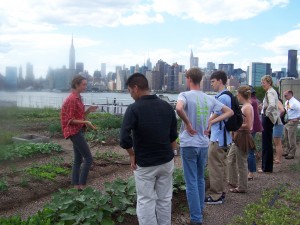 Many of us have heard of secret gardens, but how about a secret farm? Especially one that’s hiding in plain sight?
Many of us have heard of secret gardens, but how about a secret farm? Especially one that’s hiding in plain sight?
Recently, I visited a rooftop farm in Greenpoint, Brooklyn. Yes, the farm was in Brooklyn. And yes, because of the lack of space, it was on a roof.
I was there on a field trip with other students from the Botanical Garden’s School of Professional Horticulture. From the street you could see nothing other than the industrial buildings and the Gowanus Canal (one of the most polluted waterways in the United States).
To get to the farm, we took a gray concrete staircase up three flights. On the roof there was—honest-to-goodness—a farm. It was sort of like looking at a field in Iowa or Indiana, but with views of the Manhattan skyline. Your eye first settles on the buildings across the East River, but you quickly look away from that spectacular photo-op to see crops—tomatoes, lettuces and other greens, herbs, carrots, radishes, and more—growing in just a few inches of soil across 6,000 square feet. There’s a chicken coop (those layers enjoy the best views of any chickens this side of Switzerland). And there are three beehives, whose inhabitants pollinate the plants. (The farm is so secret that even many insects and birds have yet to discover it.)
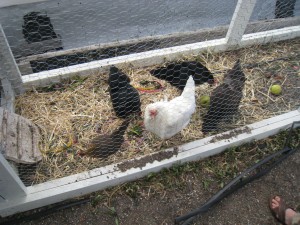 The Eagle Street Rooftop Farm is the brainchild of co-founder Annie Novak in partnership with Goode Green and Broadway Stages. Annie has become a real celebrity in the urban gardening scene. She travels the world to learn from farmers everywhere, including a recent trip to my native Peru to learn about potatoes. She’s also coordinator of the Children’s Gardening Program in the Ruth Rea Howell Family Garden at the Botanical Garden.
The Eagle Street Rooftop Farm is the brainchild of co-founder Annie Novak in partnership with Goode Green and Broadway Stages. Annie has become a real celebrity in the urban gardening scene. She travels the world to learn from farmers everywhere, including a recent trip to my native Peru to learn about potatoes. She’s also coordinator of the Children’s Gardening Program in the Ruth Rea Howell Family Garden at the Botanical Garden.
Read More
Posted in Programs and Events, The Edible Garden on June 28 2010, by Plant Talk
Fresh, Local Foods From Farms Converts This City-bred Aficionado
 |
Luis G. Perreaux Jr. is the Botanical Garden’s Public Education Greenmarket Intern this summer and fall. |
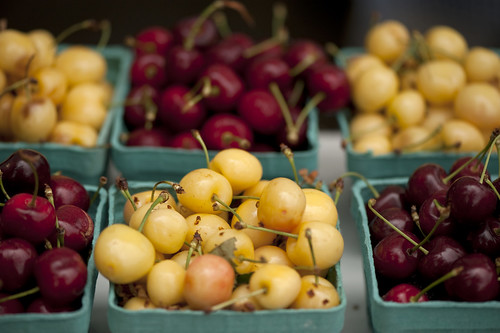 As a native of the Bronx, I grew up thinking that food was only available at supermarkets and bodegas, and I had no idea how it got there. Not until I visited a farm in the Dominican Republic, where my parents were born, did I realize that the growing of food is a collaborative process that connects people, plants, and animals in ways I could never have imagined on my own.
As a native of the Bronx, I grew up thinking that food was only available at supermarkets and bodegas, and I had no idea how it got there. Not until I visited a farm in the Dominican Republic, where my parents were born, did I realize that the growing of food is a collaborative process that connects people, plants, and animals in ways I could never have imagined on my own.
I loved how the farmer would constantly rotate crops and livestock so the soil would stay fertile and moist. After that memorable trip, I began to care more about where my foods came from and whether they were sustainable or not. Then I found the Greenmarket at 161st and Grand Concourse, where the old Yankee Stadium used to be, with its fresh, locally grown, and nutritious produce. I have been a devoted fan of Greenmarkets ever since.
Read More
Posted in Exhibitions, The Edible Garden on June 25 2010, by Plant Talk
Abigail Kirsch Booksigning and Chef Cooking Demos This Weekend
 |
Alison Awerbuch is Chief Culinary Officer and Partner of Abigail Kirsch Catering Relationships. |
Editor’s note: Abigail Kirsch Catering Relationships, which manages the Botanical Garden’s two cafes and the on-site catered events, will be featured this Saturday, June 26, during The Edible Garden. Corporate Executive Chef Mark Gagnon will present two cooking demonstrations, and Abigail Kirsch will sign her cookbooks, which will be available for purchase.
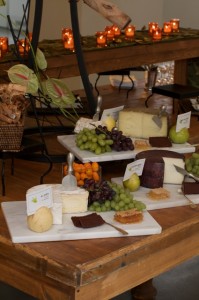 When creating menu items and presentations, we at Abigail Kirsch Catering Relationships pull from our surroundings and are often inspired by the garden. Whenever possible, we incorporate local, sustainable vegetables, fruits, and herbs into our offerings, and there is no better time for this in New York than in the spring, summer, and fall! We tap on local farmers for the freshest and most flavorful items to enhance our menus.
When creating menu items and presentations, we at Abigail Kirsch Catering Relationships pull from our surroundings and are often inspired by the garden. Whenever possible, we incorporate local, sustainable vegetables, fruits, and herbs into our offerings, and there is no better time for this in New York than in the spring, summer, and fall! We tap on local farmers for the freshest and most flavorful items to enhance our menus.
Below are inspired ways you can incorporate the garden when you entertain this summer.
Green Market Buffet
Whether close to home or far away, we are always inspired by what is happening in that locale’s food scene. For instance, a recent weekend in the Catskills offered a lush landscape of a thousand shades of green; an abundance of local, sustainable foods; and aisles upon aisles of retro chic at flea markets (although you have to dig hard to find just the right pieces).
This inspired me to create a “green market buffet” where our organic food presentations were displayed on rustic farm tables and our entire menu was served on a wonderful assortment of green pressed glass, rustic wood, and galvanized metal trays. Mix-and-match plates, flatware, and glassware along with retro linen created an uncomplicated, retro look.
Read More
 From digging in the Children’s Vegetable Garden to pretending to harvest fruits and vegetables at the Farm-to-Table play station, it’s easy for families to make a connection with food while having fun during The Edible Garden, which runs through October 17.
From digging in the Children’s Vegetable Garden to pretending to harvest fruits and vegetables at the Farm-to-Table play station, it’s easy for families to make a connection with food while having fun during The Edible Garden, which runs through October 17.
